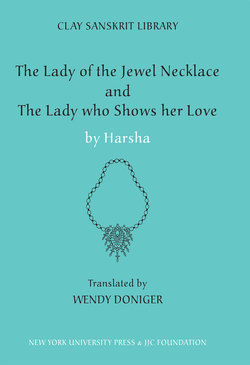Читать книгу The Lady of the Jewel Necklace & The Lady who Shows her Love - Harsha - Страница 12
На сайте Литреса книга снята с продажи.
ОглавлениеWho was Harsha?
H
arsha (also called Harsha·vardhana, Shri Harsha, Harsha Deva, and Shiladitya) was a king, who reigned from 606 to 647 over the kingdom of Kanauj (near modern Kanpur). We have far more information about him than we have about most kings of this period, largely due to three witnesses. His court poet, Bana, wrote a prose poem about him, ‘The Deeds of Harsha’ (Harsa/carita), which offers, hidden between the layers of fulsome praise and literary display, quite a lot of information about life as it was lived at Harsha’s court. And the Chinese Buddhist traveler Hsuan Tsang, who visited the region between 630 and 647, gives a detailed eyewitness description of Harsha’s administration. Since both Bana and Hsuan Tsang were under Harsha’s patronage, we must take their testimonies with a grain of salt, but much of what each says is confirmed by the other, as well as by the third witness, Harsha himself, who wrote three plays, two of which—the two translated in this volume—describe life at court. For instance, Hsuan Tsang reports that when Harsha was meeting with the king of Kama·rupa (Assam), a group of dissidents set fire to a tower in which the Buddha image was placed. Harsha rushed headlong into the flames and saved the image. This scene is dramatically reflected in one of Harsha’s plays, ‘The Lady of the Jewel Necklace,’ when the Harsha-figure, King Udayana, rushes into the fire to save princess Ratnavali.
Harsha came of a powerful ruling family and ruled over the fertile land between the Ganges and Yamuna rivers, a kingdom that he extended into most of Bengal, Bihar, and Malwa, until he ruled the whole of the Ganges basin ________
